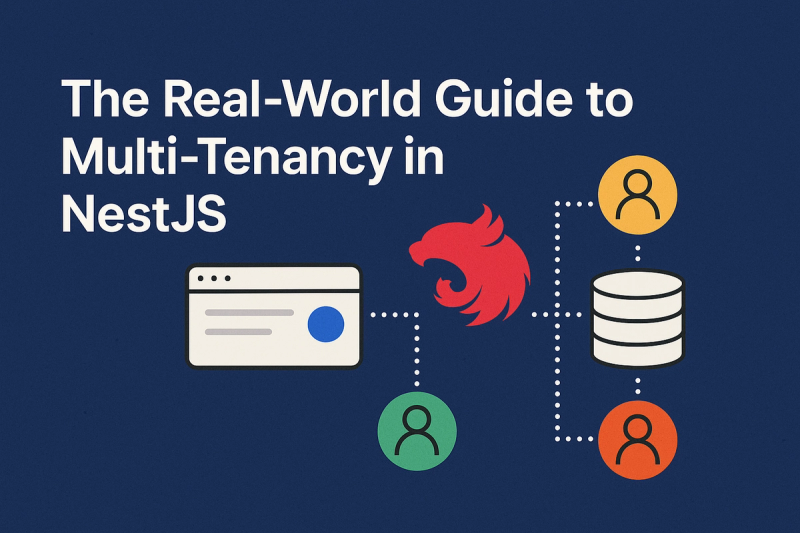May 1, 2025
The Real-World Guide to Multi-Tenancy in NestJS

May 1, 2025

If you've ever tried to retrofit multi-tenancy into a NestJS app that was originally built with one big happy tenant in mind, you know the feeling: it's like trying to renovate a house while people still live in it. Plumbing everywhere, everyone's yelling, and no one's sure who flushed what.
But here’s the thing—multi-tenancy isn't just for SaaS startups with pitch decks. Whether you’re managing customers, organizations, or even franchises, supporting multiple tenants is table stakes for real-world applications. And yet, it still feels weirdly under-documented.
Let’s fix that.
In short? One app. Many customers.
Each customer (or "tenant") should get their own logically isolated experience—whether that means isolated data, config, or even runtime behavior. Now, how strict that isolation needs to be? That depends on your use case. And your anxiety level.
There are basically three flavors:
Spoiler alert: none of these are magic bullets. You trade off performance, cost, and complexity either way.
This is where it gets fun. How does your app know which tenant a request belongs to?
There are a few street-smart ways to do this:
Honestly, headers and subdomains tend to be the cleanest. Headers are great for APIs; subdomains feel more natural for web apps. JWTs are handy if you’ve already got a token-based auth system in place.
Once you have that tenant ID, stash it somewhere useful. Most folks use a request-scoped provider, custom decorator, or even an interceptor to inject it.
Here’s where NestJS shines—and bites.
Because everything in Nest is heavily tied to DI (Dependency Injection), you can actually create tenant-aware services. Think of it like personal shoppers for each tenant. They each get their own cart, but shop in the same store.
You can do this by using request-scoped providers. For example, spin up a tenant-aware PrismaService or MongooseService depending on who’s knocking. Some folks go even deeper and use dynamic modules to create tenant-specific containers. That’s not overkill; that’s a Tuesday.
Or if you're doing DB-per-tenant, maintain a connection map. Bonus points if you lazy-load them and clean up idle ones like a responsible adult.
This is the part where architecture meets budget.
Here’s a quick rule of thumb:
Oh buddy.
So yes, multi-tenancy is powerful, but it turns everything up to 11.
You don’t have to roll out full-blown DB-per-tenant tomorrow. Start small. Use request context. Test your filtering logic like it owes you money.
And maybe throw in a sanity check: if your code can’t tell who a request belongs to, it should probably throw a fit.
NestJS gives you the tools—modules, interceptors, context injection—to make this clean. You just need to be a little paranoid and a lot consistent.
So go forth and tenant responsibly.